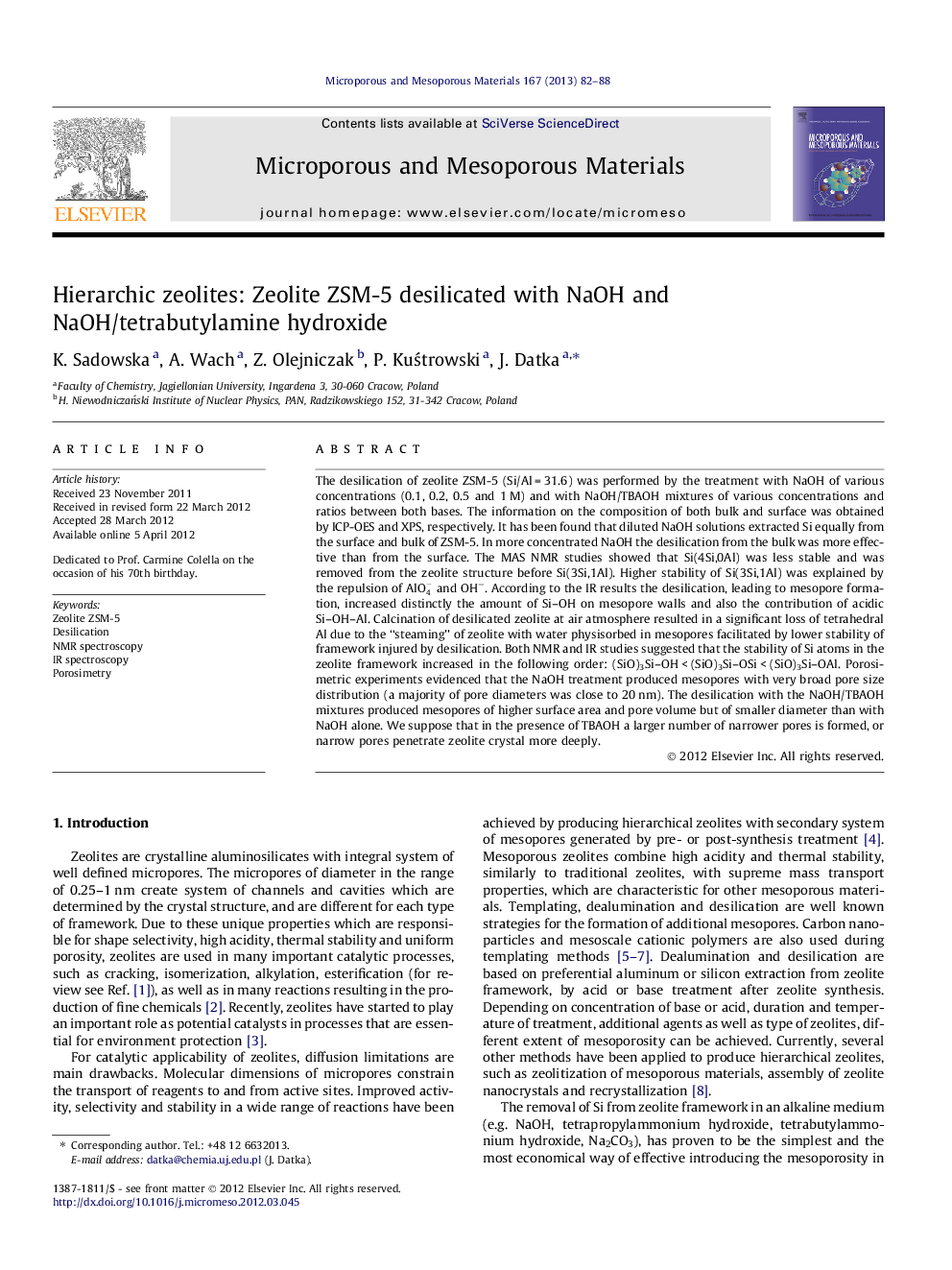| کد مقاله | کد نشریه | سال انتشار | مقاله انگلیسی | نسخه تمام متن |
|---|---|---|---|---|
| 73738 | 49070 | 2013 | 7 صفحه PDF | دانلود رایگان |

The desilication of zeolite ZSM-5 (Si/Al = 31.6) was performed by the treatment with NaOH of various concentrations (0.1, 0.2, 0.5 and 1 M) and with NaOH/TBAOH mixtures of various concentrations and ratios between both bases. The information on the composition of both bulk and surface was obtained by ICP-OES and XPS, respectively. It has been found that diluted NaOH solutions extracted Si equally from the surface and bulk of ZSM-5. In more concentrated NaOH the desilication from the bulk was more effective than from the surface. The MAS NMR studies showed that Si(4Si,0Al) was less stable and was removed from the zeolite structure before Si(3Si,1Al). Higher stability of Si(3Si,1Al) was explained by the repulsion of AlO4- and OH−. According to the IR results the desilication, leading to mesopore formation, increased distinctly the amount of Si–OH on mesopore walls and also the contribution of acidic Si–OH–Al. Calcination of desilicated zeolite at air atmosphere resulted in a significant loss of tetrahedral Al due to the “steaming” of zeolite with water physisorbed in mesopores facilitated by lower stability of framework injured by desilication. Both NMR and IR studies suggested that the stability of Si atoms in the zeolite framework increased in the following order: (SiO)3Si–OH < (SiO)3Si–OSi < (SiO)3Si–OAl. Porosimetric experiments evidenced that the NaOH treatment produced mesopores with very broad pore size distribution (a majority of pore diameters was close to 20 nm). The desilication with the NaOH/TBAOH mixtures produced mesopores of higher surface area and pore volume but of smaller diameter than with NaOH alone. We suppose that in the presence of TBAOH a larger number of narrower pores is formed, or narrow pores penetrate zeolite crystal more deeply.
NMR spectra of zeolite ZSM-5 desilicated in NaOH of various concentrations and calcined in vacuum and air. The spectra show removal of Si(4Si) in first order and also the dealumination of desilicated zeolite by “steaming”.Figure optionsDownload as PowerPoint slideHighlights
► The stability of Si increases in the order: (SiO)3Si–OH < (SiO)3Si–OSi < (SiO)3Si–OAl.
► In diluted NaOH Si was uniformly extracted from the bulk and from surface zone.
► In concentrated NaOH more was extracted from the bulk.
► Calcination of desilicated zeolite results in “steaming” with water stored in mesopores.
► In the presence of TBAOH bigger number of narrow pores is formed than with NaOH only.
Journal: Microporous and Mesoporous Materials - Volume 167, February 2013, Pages 82–88